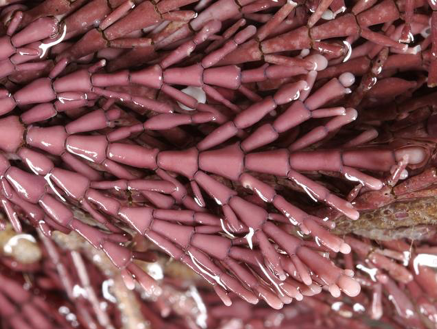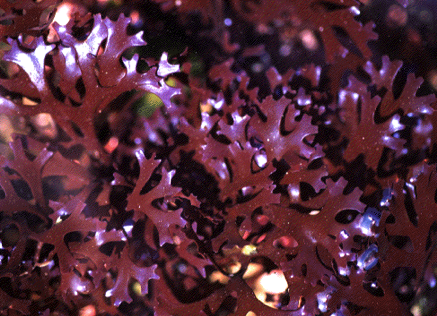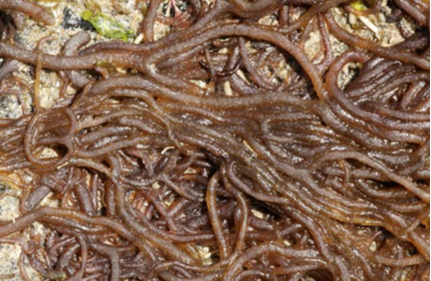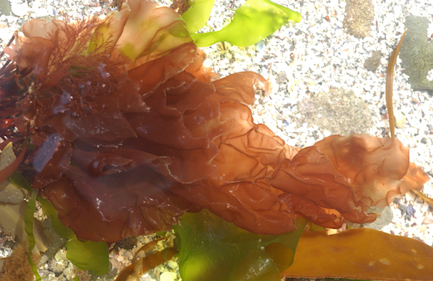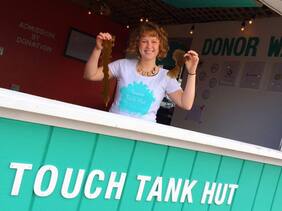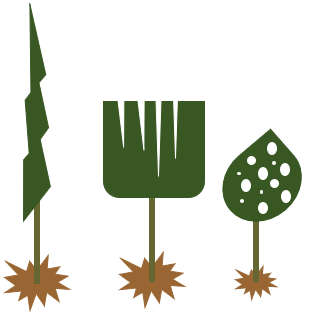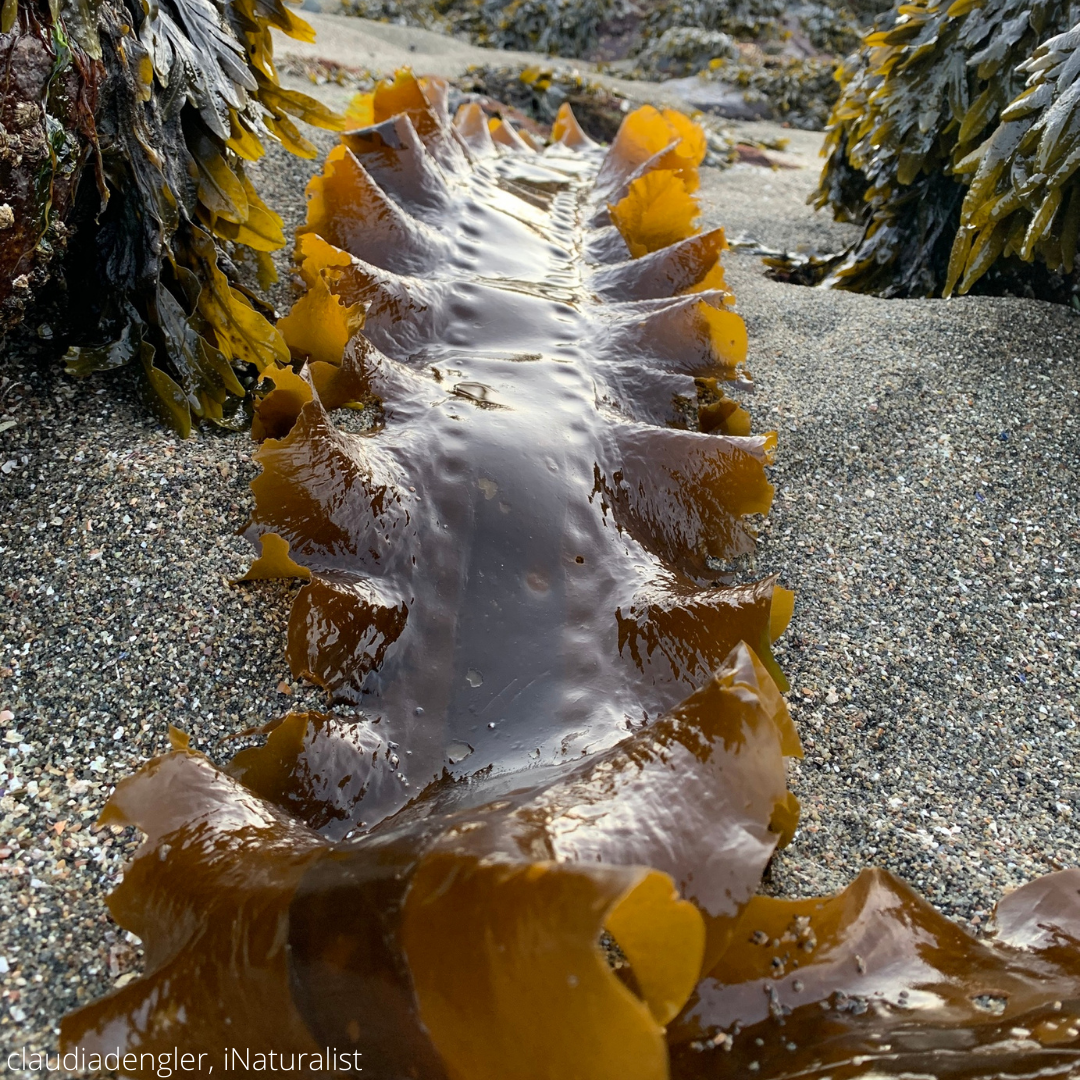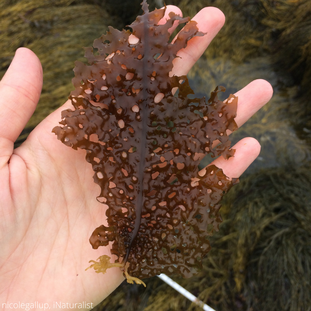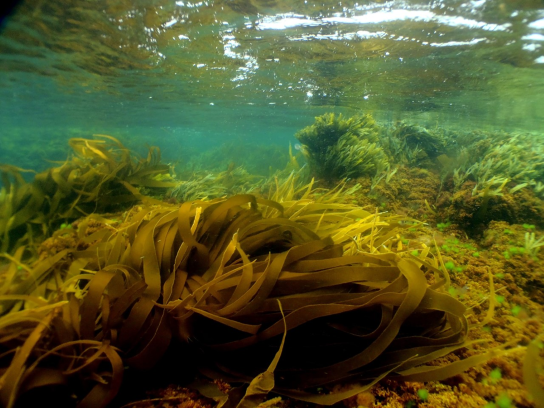|
When most individuals “see red”, they are getting angry. When I “see red”, I am getting excited because I probably just spotted red algae (Rhodophyta)! Unlike the brown algal species described here, red algae contains a pigment called phycoerythin which absorbs blue light and reflects – you guessed it – red light. The more phycoerythin a species has, the redder it appears. What local, Nova Scotian red algae species below do you think has the most phycoerythin? Corallina officinalis Chondrus crispus Nemalion helminthoides Porphyra Not only does the colour differ, but there are other morphological (or the way something looks) differences between these four red algae species. You may have noticed, for example, that Corallina looks hard and articulated whereas Porphya looks soft and sheet-like. Perhaps it was the ooey-gooey, worm-like Nemalion that first caught your eye or the branching Chondrus. Whatever it was, I am sure you’d agree that there is a lot of morphological (there’s that word again) variation between these four species. Now, what would you say if I told you there are more than 6,000 species of red algae? Although there are morphological differences galore amongst red algae, there are also differences in how species are used by us! Would you believe me if I told you certain Corallina species are dried and used as a bone-forming material? It’s true! Chondrus crispus’s use is equally mind-blowing: did you know that it is harvested and used in Jell-O, ice cream, and vegan gelatin? It’s true! What about Porphya? It’s true that Porhyra is used in sushi! What about Nemalion, did you know it is harvested by aliens to make spaghetti? Okay, maybe that last one isn’t true. Regardless of what it looks like or what we use it for, I hope that you get excited the next time you “see red”. Tune in next time for when we explore green algae!
0 Comments
"April showers bring May flowers”. A hopeful expression that is heard and repeated by many in Atlantic Canada as we collectively say goodbye to the winter and get excited about the summer. A lesser-known expression with similar sentiments is “When spring winds are a-blowing, kelp are actively growing”. Okay, I may have made up the expression, but the information within is true – spring is the time when most kelp grow most actively! The term ‘kelp’ refers to a mix of brown algal species that can be recognized by their large blade (leaf-like structure), long and strong stipe (stem-like structure), and anchoring holdfast. Some examples of kelp species found in the coastal ocean around Nova Scotia are Lasagna Kelp (Saccharina latissima), Colander Kelp (Agarum clathratum), and Oarweed (Laminaria digitata). Which drawing do you think matches each kelp name? If you guessed (from left to right), Lasagna kelp, Oarweed, and Colander kelp, you’re right! These are all kelps you’re likely to find washed up along our Nova Scotia coast, so keep an eye out for them on your next beach walk! Kelp is one of the fastest growing seaweeds in the world and Nova Scotia kelp can reach upwards of 10 metres in length: to visualize, a standard school bus is 10 metres long. Some species around the world can grow up to 60-centimetres in a single day! Kelp grows so large and so quickly by using photosynthesis to produce sugars, just like land plants. Unlike land plants who gain nutrients through their roots, however, kelps gain their nutrients directly from the surrounding water. Spring is a particularly wonderful time for kelp growth because these processes – photosynthesis and nutrient uptake – are working particularly well together. Photosynthesis, for one, is improved as light can reach the ocean floor largely unfiltered by suspended, blooming algae or by a canopy of larger kelp, as happens later in the summer. The availability of nutrients is also improved as wind and other upwelling-inducing events bring deep, cold, nutrient-packed water to shallow, kelp-infested waters. As they say, “When spring winds are a-blowing, kelp are actively growing”. Tune in next time for when we explore red algae! Learn more about one species of kelp, in Back to the Sea Society’s Lasagna Kelp (Saccharina latissima) Shell & Tell episode. 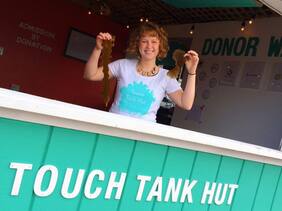 Kaitlin is a self-identified ocean lover and wannabe communicator who has been volunteering with Back to the Sea for years. Equipped with a degree in marine biology, she is an avid advocate for ocean literacy, curiosity, and stewardship and feels passionate about collaborating with others to make information available and accessible. Working by day and blogging by night, she aims to post about all the interesting, fascinating, and just plain weird happenings that occur in the ocean. |
Categories
All
We send blog recaps with in all our quarterly newsletters!
|
